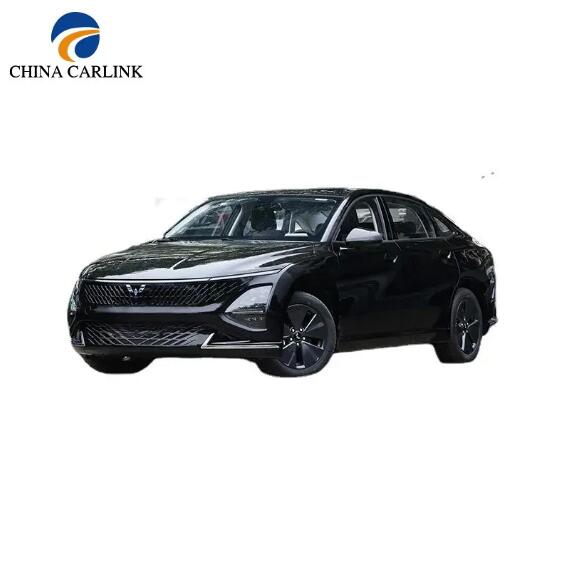Passenger Vehicles vs. Commercial Vehicles: Key Differences Explained
2024-11-06
When we talk about vehicles, we typically categorize them into two main types: passenger vehicles and commercial vehicles. Although both serve transportation purposes, they are designed for very different functions, and understanding the differences between them can be important for consumers, businesses, and professionals alike. In this blog post, we will dive into the key differences between passenger vehicles and commercial vehicles, highlighting the various features that set them apart.
1. Purpose and Functionality
The most fundamental difference between passenger and commercial vehicles lies in their intended purpose:
- Passenger Vehicles: These vehicles are primarily designed to transport individuals and small groups of people from one location to another. Passenger vehicles include cars, SUVs, and minivans, and their design focuses on comfort, convenience, and personal use. They are optimized for carrying passengers with a reasonable amount of luggage or personal items.
- Commercial Vehicles: These vehicles are designed to transport goods, materials, or large numbers of people for business purposes. Commercial vehicles include trucks, vans, buses, and delivery vehicles, and their primary goal is to facilitate trade, cargo transport, and large-scale public transportation. Some commercial vehicles are also adapted to specific industries, such as refrigerated trucks or service vehicles.
2. Vehicle Design and Size
The design and size of a vehicle are directly influenced by its function:
- Passenger Vehicles: Typically, passenger vehicles are designed to be compact or mid-size, depending on the needs of the owner. They focus on aerodynamics and aesthetics for better fuel efficiency and comfort. Passenger vehicles are generally designed to carry 2 to 7 passengers and their luggage. The interior is spacious, and the vehicle features amenities like air conditioning, entertainment systems, and premium seating options.
- Commercial Vehicles: Commercial vehicles are often much larger, as they are built to carry heavier loads or larger numbers of people. For instance, trucks can vary from small delivery vans to large articulated lorries, designed to transport goods of various sizes and weights. Similarly, buses and coaches are built to accommodate a large number of passengers. These vehicles may lack luxury features but are designed for durability, strength, and utility, with an emphasis on cargo space, payload capacity, and robust engines.
3. Engine Power and Performance
Passenger and commercial vehicles also differ greatly in terms of engine power and performance:
- Passenger Vehicles: Passenger vehicles are usually equipped with engines that are designed for fuel efficiency and comfort rather than sheer power. Most passenger vehicles feature engines with lower horsepower compared to commercial vehicles, optimized to achieve a balance between speed, fuel economy, and smooth driving experience. The emphasis is on performance for everyday driving, including acceleration, handling, and braking.
- Commercial Vehicles: Commercial vehicles, on the other hand, are often equipped with much more powerful engines to carry heavy loads over long distances or navigate difficult terrain. Whether it’s a delivery truck, construction vehicle, or bus, commercial vehicles need more torque and horsepower to handle the stresses of daily work. As a result, these vehicles tend to consume more fuel and require more frequent maintenance due to the demands placed on the engine.
4. Regulations and Licensing
Another critical distinction between passenger and commercial vehicles is the regulatory requirements and licensing:
- Passenger Vehicles: Driving a passenger vehicle typically requires a regular driver’s license. The regulations regarding passenger vehicles are more relaxed in comparison, as their primary role is personal transportation. Drivers are expected to adhere to basic safety laws such as speed limits, seat belt usage, and road safety rules.
- Commercial Vehicles: Commercial vehicles, due to their size, weight, and potential risk to other road users, are subject to more stringent regulations. Drivers of commercial vehicles need specialized commercial driving licenses, such as a CDL (Commercial Driver's License) in many countries, which require additional training and testing. These vehicles also need to comply with heavier inspection and maintenance schedules, and the weight and load carried by the vehicle are often subject to weight limits regulated by law.
5. Cost and Ownership
The cost of purchasing, operating, and maintaining a passenger vehicle compared to a commercial vehicle can vary significantly:
- Passenger Vehicles: The cost of passenger vehicles can range from budget models to luxury ones, with the main focus being affordability and ownership convenience. Insurance for passenger vehicles tends to be less expensive than commercial vehicles due to lower risks associated with personal use. Fuel and maintenance costs are also relatively lower for passenger vehicles, as they are smaller and used less intensively.
- Commercial Vehicles: Commercial vehicles are generally more expensive to purchase and maintain because of their larger size, more powerful engines, and specialized components. Insurance for commercial vehicles is typically higher due to the increased risk of accidents, liability, and cargo damage. Additionally, these vehicles may require specialized maintenance depending on their function (e.g., refrigeration units, hydraulic lifts, etc.).
6. Usage Frequency and Duration
- Passenger Vehicles: Most passenger vehicles are driven primarily on weekends, commuting to work, or for family trips. They may spend less time on the road compared to commercial vehicles, but their usage tends to be more consistent over the years, often reaching high mileage within their lifespan.
- Commercial Vehicles: Commercial vehicles, especially those used for logistics and transport, can be in operation daily for long hours, sometimes even around the clock. These vehicles are designed for long-term durability and can accumulate a significant amount of mileage more quickly than personal vehicles.
In summary, passenger vehicles and commercial vehicles differ fundamentally in their purpose, design, engine performance, regulatory requirements, cost, and frequency of use. While passenger vehicles are designed for personal transportation with an emphasis on comfort and efficiency, commercial vehicles prioritize capacity, durability, and power to serve the needs of businesses and industries. Understanding these differences can help you make informed decisions whether you’re buying a car for personal use or selecting a vehicle for your business operations.



